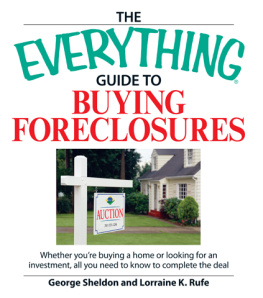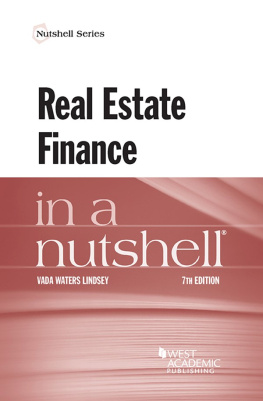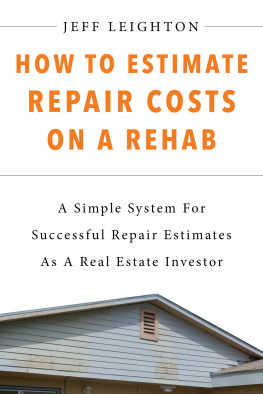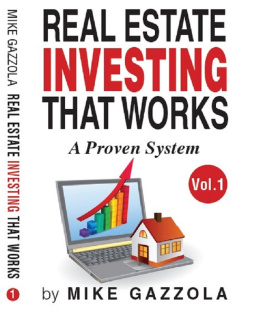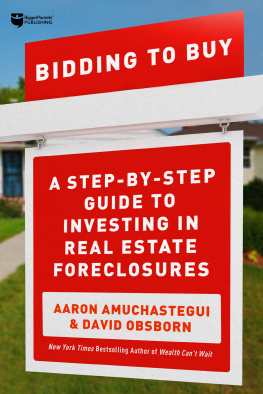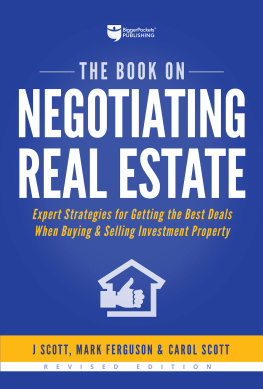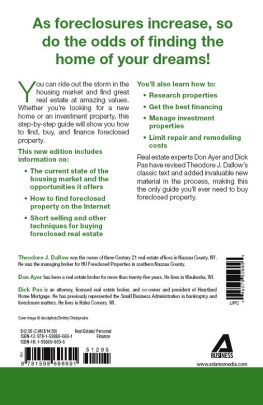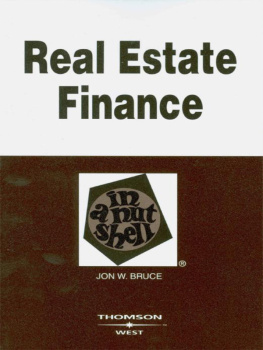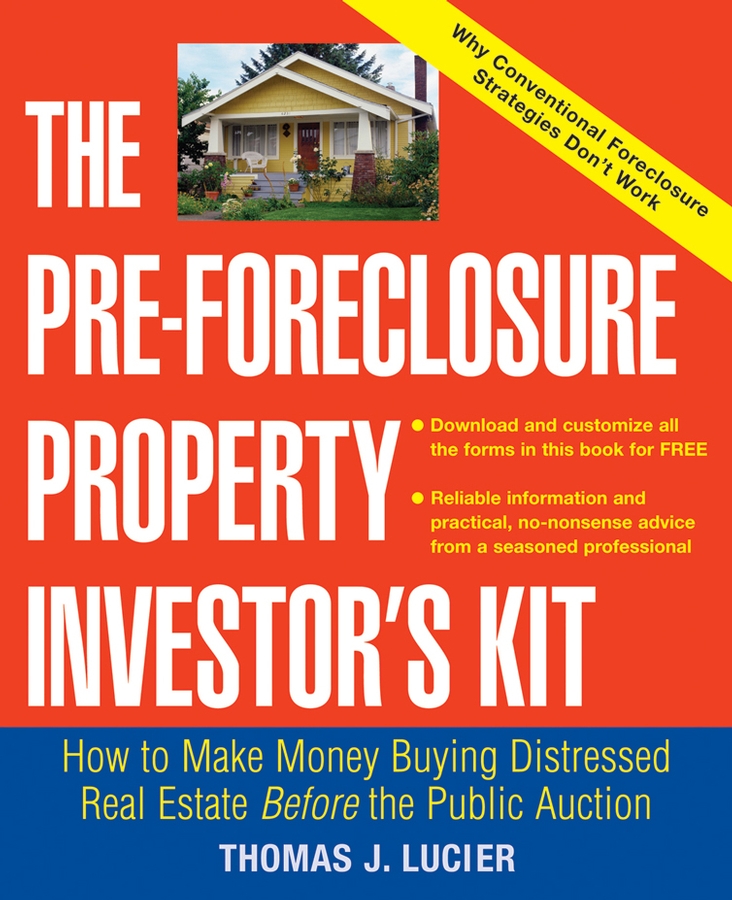CONTENTS

Copyright 2005 by Thomas J. Lucier. All rights reserved.
Published by John Wiley & Sons, Inc., Hoboken, New Jersey.
Published simultaneously in Canada.
No part of this publication may be reproduced, stored in a retrieval system, or transmitted in any form or by any means, electronic, mechanical, photocopying, recording, scanning, or otherwise, except as permitted under Section 107 or 108 of the 1976 United States Copyright Act, without either the prior written permission of the Publisher, or authorization through payment of the appropriate per-copy fee to the Copyright Clearance Center, Inc., 222 Rosewood Drive, Danvers, MA 01923, (978) 750-8400, fax (978) 646-8600, or on the web at www.copyright.com . Requests to the Publisher for permission should be addressed to the Permissions Department, John Wiley & Sons, Inc., 111 River Street, Hoboken, NJ 07030, (201) 748-6011, fax (201) 748-6008.
Limit of Liability/Disclaimer of Warranty: While the publisher and author have used their best efforts in preparing this book, they make no representations or warranties with respect to the accuracy or completeness of the contents of this book and specifically disclaim any implied warranties of merchantability or fitness for a particular purpose. No warranty may be created or extended by sales representatives or written sales materials. The advice and strategies contained herein may not be suitable for your situation. The publisher is not engaged in rendering professional services, and you should consult a professional where appropriate. Neither the publisher nor author shall be liable for any loss of profit or any other commercial damages, including but not limited to special, incidental, consequential, or other damages.
For general information on our other products and services please contact our Customer Care Department within the United States at (800) 762-2974, outside the United States at (317) 572-3993 or fax (317) 572-4002.
Wiley also publishes its books in a variety of electronic formats. Some content that appears in print may not be available in electronic books. For more information about Wiley products, visit our web site at www.wiley.com .
Library of Congress Cataloging-in-Publication Data:
Lucier, Thomas J.
The pre-foreclosure property investors kit : how to make money buying distressed real estate... before the public auction / Thomas Lucier.
p. cm.
ISBN 0-471-69279-4
1. Real estate investmentUnited States. 2. ForeclosureUnited States.
I. Title.
HD255.L829 2005
332.6324dc22
2004021911
To my wife and business partner, Barbara V. Lucier, who has steadfastly stood shoulder-to-shoulder with me through the good, the bad, and the ugly!
LIST OF DOWNLOADABLE FORMS
PART I
GETTING STARTED AS A PROFITABLE PRE-FORECLOSURE INVESTOR
Chapter 1
How You Can Make $60,000 a Year Investing in Pre-Foreclosure Properties Part-Time
First off, I want to take this opportunity to thank you for investing your hard-earned money in a copy of The Pre-Foreclosure Property Investors Kit. I also want to congratulate you on making a very wise investment decision! As you will soon find out, this book lives up to its title. It is packed with step-by-step instructions, ready-to-use worksheets, checklists, letters and agreements, and practical, no-nonsense advice on how to buy properties directly from owners with mortgage or deed of trust loans that are in default and facing foreclosure.
The Definition of Pre-Foreclosure
First things first: Before I begin to tell you how you can make $60,000 a year investing in pre-foreclosure properties part-time, I need to give you a brief description of what the term pre-foreclosure means. Pre-foreclosure refers to the period of time during the foreclosure process between when a lender files a foreclosure lawsuit or a notice of default in the official public records and the date the property is scheduled to be sold at a public foreclosure auction or trustees sale. The entire foreclosure process is covered in great detail in Chapter 4.
Why the Pre-Foreclosure Stage Is the Time to Buy during the Foreclosure Process
The real trick to consistently making money in real estate is to find a steady source of readily identifiable property owners who have a compelling reason to sell their property. This type of property owner is known in the business as a motivated seller. And that is exactly why I like investing in pre-foreclosure properties. Pre-foreclosures provide a steady source of readily identifiable motivated sellers in the form of property owners with mortgage or deed of trust loans that lenders have publicly declared to be in default and facing foreclosure. As you will soon learn, the future looks bright for pre-foreclosure property investors in the know. The coming months and years could provide a record number of opportunities to buy properties, at a discount, directly from motivated sellers who have a very compelling reason to sell their property. In Chapter 2, you will get the lowdown on exactly why you should never bid on properties at public foreclosure auction or trustee sales or buy lender-owned repossessed properties.
The First Step to Making $60,000 a Year Investing in Pre-Foreclosures Part-Time
I do not know about you, but to me, $60,000 a year is nothing to scoff at, especially from a part-time job. And if you are willing to apply the information and advice that is contained in this book, and work hard, and dont quit the first time you run into an obstacle, you can reasonably expect to earn $60,000 a year investing in pre-foreclosures part-time. The $60,000 annual income figure that I am using in this chapter to illustrate the profit potential that pre-foreclosure properties can provide to hard-working investors is not based on wishful thinking or pie-in-the-sky logic. Rather, it is based on local foreclosure market conditions and how much time, money, and energy the average investor has to dedicate to investing in pre-foreclosures. For example, in lower cost housing markets, an investor might have to do six $10,000 deals in order to earn $60,000 annually. To accomplish this, an investor would have to buy and resell one pre-foreclosure property every two months. In more expensive housing markets, it could very well take an investor just four $15,000 deals to earn $60,000 annually. This would require completing one deal every three months. And, in high-end markets, an investor could do two $30,000 deals or even earn $60,000 from a single property. Please keep in mind that individual results will vary and that many people may not reach $60,000 in profits during their first year in business. But, what if you earn only a measly $20,000 during your first year? I am willing to bet that most of the people reading this book could put an extra $20,000 in annual income to good use.
Why Now Is One of the Best Times Ever to Invest in Pre-Foreclosure Properties
Todays soft economy, lax lending policies, predatory lending practices, and historically low interest rates are causing overextended homeowners to default on their mortgage and deed of trust loans in very large numbers. As I write this, the Mortgage Bankers Association of America has just reported in their quarterly National Delinquency Survey that a near record number of single-family homes were in foreclosure during the last quarter of 2003. Also, other organizations that monitor residential loan trends are not making any rosy predictions about any possible future decline in the number of mortgage foreclosures. In fact, the number of home loans foreclosed on each year has steadily increased over the past 20 years. According to the U.S. Census Bureaus statistical abstract, the number of homes in foreclosure in 1980 was 114,000, while the number of homes in foreclosure in the year 2001the latest year in which information is availablewas 555,000. This is an increase of over 250 percent. The main reason that I do not see any letup in the number of foreclosures in the foreseeable future is because of the unbridled spending habits of most Americans, which are fueled by easily accessible credit in the form of credit cards. Far too many homeowners today are in debt up to their eyeballs and living on borrowed money, well beyond their financial means. They are living in houses they really cannot afford. And until Mr. and Mrs. America learn how to live a lifestyle that is based solely on their actual income, and not on the credit limits of their fantastic plastic credit cards, the number of foreclosures nationwide can only go one way: straight up!



